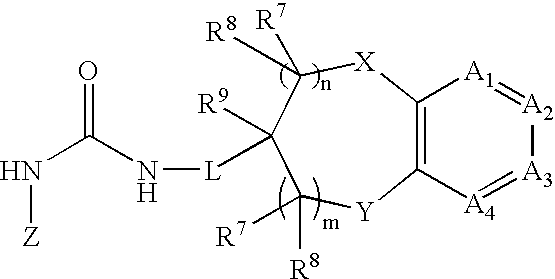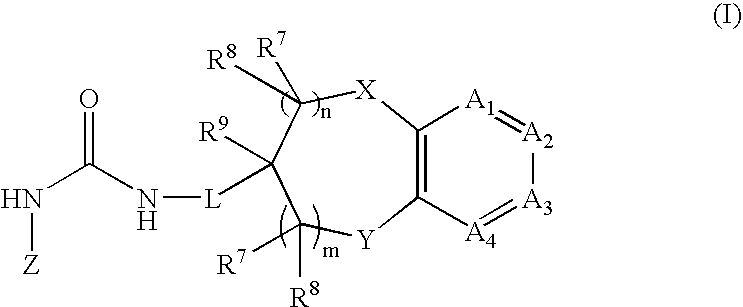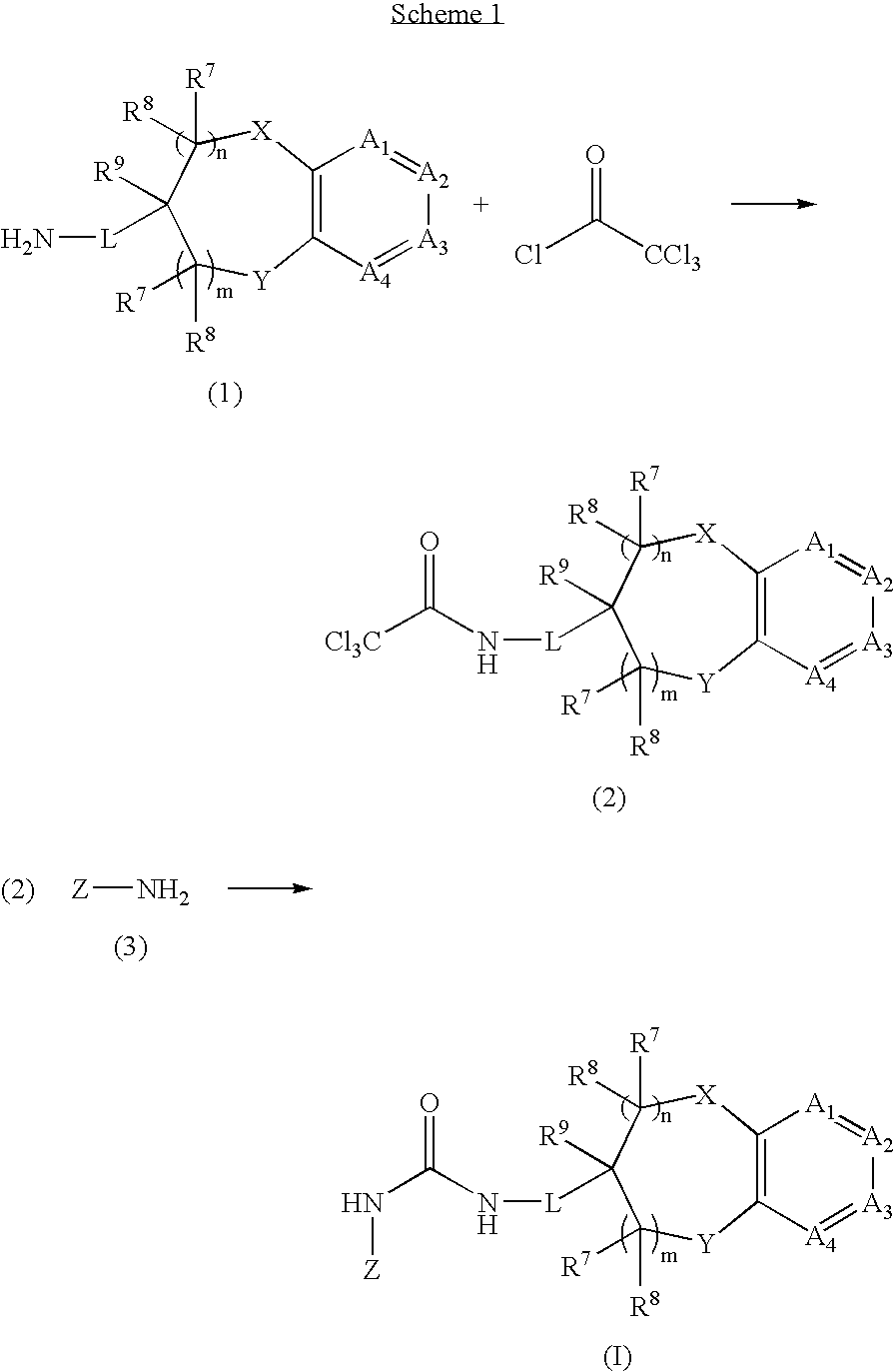Chromanylurea compounds that inhibit vanilloid receptor subtype 1 (VR1) receptor and uses thereof
a vanilloid receptor and compound technology, applied in the field of compounds, can solve problems such as cell membrane depolarization
- Summary
- Abstract
- Description
- Claims
- Application Information
AI Technical Summary
Benefits of technology
Problems solved by technology
Method used
Image
Examples
example 1
N-(7-tert-butyl-3,4-dihydro-2H-chromen-4-yl)-N′-1H-indazol-4-ylurea
example 1a
7-tert-Butyl-chroman-4-one
[0086] A. 3-tert-butyl-phenol (1.50 g, 10 mmol), 2-(2-bromo-ethyl)-[1,3]dioxane (1.38 g, 10 mmol) and potassium carbonate (2.15 g, 11 mmol) in 20 ml acetonitrile was heated to reflux for 16 hours. After cooling, the solvent was removed under reduced pressure and the residue partitioned between diethyl ether and water. The isolated organic layer was washed with water, dried with magnesium sulfate, filtered and the solvent removed under reduced pressure to give 2.97 g of crude 2-[2-(3-tert-butyl-phenoxy)-ethyl]-[1,3]dioxane, which was used without further purification.
[0087] B. The intermediate from step A was dissolved in 20 ml tetrahydrofuran. Concentrated hydrochloric acid (20 mL) was added, and the reaction mixture was stirred at ambient temperature for 4 hours, diluted with diethyl ether and washed with water. The isolated organic layer was dried with magnesium sulfate, filtered and the solvent removed under reduced pressure to give 2.87 g of crude 7-t...
example 1b
7-tert-Butyl-chroman-4-one O-methyl-oxime
[0089] The product of Example 1A (1.50 g, 7.3 mmol) and methoxyamine hydrochloride (0.69 g, 8 mmol) were dissolved in 7 mL of pyridine. The reaction mixture was stirred at ambient temperature for 16 hours, and the pyridine removed under reduced pressure. The residue was taken in diethyl ether and sequentially washed with water and 1N aqueous hydrochloric acid. The isolated organic layer was then dried with magnesium sulfate, filtered and the solvent removed under reduced pressure to give 1.53 g of the title compound, which was used without further purification. MS (DCI) m / e 234 (M+H)+
PUM
 Login to View More
Login to View More Abstract
Description
Claims
Application Information
 Login to View More
Login to View More - R&D
- Intellectual Property
- Life Sciences
- Materials
- Tech Scout
- Unparalleled Data Quality
- Higher Quality Content
- 60% Fewer Hallucinations
Browse by: Latest US Patents, China's latest patents, Technical Efficacy Thesaurus, Application Domain, Technology Topic, Popular Technical Reports.
© 2025 PatSnap. All rights reserved.Legal|Privacy policy|Modern Slavery Act Transparency Statement|Sitemap|About US| Contact US: help@patsnap.com



